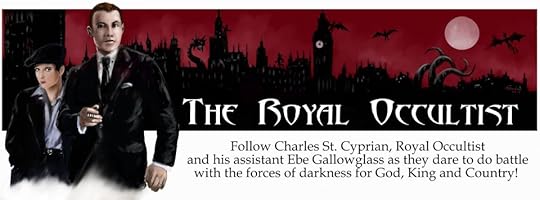Joshua Reynolds's Blog, page 17
October 18, 2021
The Graves of Egypt
Seems I’ve spent the better part of my life amongst the dead.
– John Banning
For Day 18, I decided to hit up an old standby – the 1959 Hammer horror feature, The Mummy. It’s one of my favourites, and I tend to default to it on those occasions I want to watch something but can’t decide what. It’s another Peter Cushing – Christopher Lee joint, with Lee playing yet another mute antagonist to Cushing’s voluble hero.
That’s not to say it’s not a good film, however. As in Curse of Frankenstein (1957), Lee does a lot of acting with his eyes and body language, wonderfully conveying the immortal Kharis’ anguish and rage. He makes for a lean, loping mummy in contrast to the slow-moving sorts seen in other films. Kharis gets to smash through a lot of doors and throttle a lot of Englishmen, showing off his demonic power in well-lit parlours and entry-halls.
Cushing’s John Banning isn’t as memorable as his Victor Frankenstein, or his Van Helsing, but he holds his own against the rampaging Kharis well enough. Like Lee, Cushing had a talent for taking a relatively shallow role and imbuing it with some vitality. His Banning is quick to accept the existence of the mummy, and even quicker to formulate strategies to combat it.
The film is a slick, pulpy rehash of two of the Universal mummy films, The Mummy’s Hand (1940) and The Mummy’s Tomb (1942), with a climax reminiscent of the final film in that franchise, The Mummy’s Ghost (1944). It moves at a fair clip, taking us from an unimpressive Egypt set to the more familiar environs of England, where Kharis engages in some picturesque murders until being dispatched by the combination of a firing squad and a handy bog.
If it’s not as memorable as either Curse of Frankenstein (1957) or Dracula (1958), it’s still an entertaining film and one I can watch again and again. If you’ve never seen it, I suggest you give it a try.
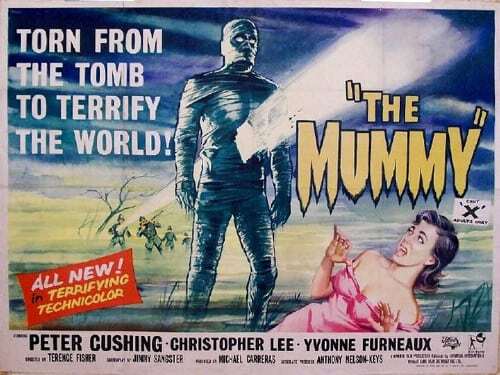
October 17, 2021
All Dead Here
One doesn’t easily forget, Herr Baron, an arm torn out by the roots.
– Inspector Krogh
For Day 17, I decided to give Son of Frankenstein (1939) another watch, mostly since I haven’t seen it in a few years. Of the three Karloff-led Frankenstein films, I prefer Bride of Frankenstein (1935) for various reasons – preeminent among them Ernest Thesiger’s performance as Dr. Pretorius – but I’ve always had a soft spot for the trilogy capper. It’s both where things begin to go off the rails for the series, but also the culmination of the monster’s evolution as a character in and of himself.
Throughout the first three films, the monster goes through a sort of apotheosis – growing from bewildered child, to man and finally to monster – a true monster. I’ve written about it before, in more detail, if you’re interested. But this is also the first film where the monster takes a backseat to other characters. He’s insensate for the first third of the film, leaving Bela Lugosi’s Ygor to act as the film’s primary antagonistic force. That said, it’s not all bad – as far as the Universal films go, Son… has some of the best supporting characters in the series. The aforementioned Ygor is probably one of Lugosi’s more restrained performances, alternating beautifully between bumptious innocence and malign cunning – a brutish Mephistopheles, luring Basil Rathbone’s Wolf von Frankenstein into damnation.
Contrasted against Ygor is the resolute Inspector Krogh, played with crisp precision by Lionel Atwill. Krogh is one of those characters I wish had appeared in more films; he’s the sort of antagonist that the later Universal monster pictures could’ve benefitted from. Too stiff to be really heroic, but still willing to go hand-to-hand with a rampaging monster. Imagine Krogh teaming up with Edward Van Sloan’s Von Helsing and Maria Ouspenskaya’s Maleva to hunt down some Dr. Pretorius as he attempts something nefarious.
Anyway, the film is a slicker production than its two predecessors. It lacks a lot of James Whale’s more esoteric touches, but keeps the expressionistic backdrop – everything feels off-kilter, exaggerated, even as the plot moves at a fair clip with only a few bumps to slow things down. It’s a fantastic film, and unfortunately, it’s all downhill for the poor monster after this.

October 16, 2021
A Game of Death
After fifteen years, I have returned.
– Vitus Verdegast
The first time I saw the 1934 Universal feature, The Black Cat, was in a college course on horror films. I had mixed feelings on it at the time; heretofore, my main exposure to Universal’s horror output was the expected fare – Frankenstein, the Wolf Man, et al. so Edgar Ulmer’s expressionistic Grand Guignol came as something of a shock.
Watching it again today, I’m struck by the sheer weirdness of it. It’s a nasty fairy-tale, eloquent but grisly. There’s incest, murder, torture, devil-worship and necrophilia aplenty as Bela Lugosi’s soul-sick psychiatrist, Verdegast, confronts a literal demon from his past – Boris Karloff at his most sinister, as the Satanic architect, Hjalmar Poelzig.
The conflict between these two characters is the heart of the film. It drives the plot, insomuch as there is one, and is the axis around which all the other characters spin. Any two other actors and it might not have worked, but Lugosi and Karloff are firing on all cylinders. Lugosi’s Verdegast is a tortured hero – mad, certainly, but on the side of the angels nonetheless. Karloff’s Poelzig is his antithesis – a predatory force with no redeeming qualities whatsoever, biding his time until his enemy is caught fast in his trap. They test one another like duellists, feint and riposte – back and forth.
The only real flaw in the film is its duration. It’s barely an hour long, and while that ensures that the film doesn’t outstay its welcome, its still a bit light on the story. But perhaps that’s for the best – as it stands, The Black Cat is a work of dark artistry and one of the better Universal horror films.
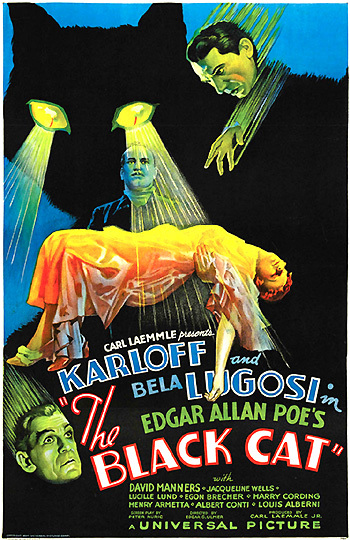
October 15, 2021
Never Believe What You Publish
Your appetite for blood intrigues me. We have a lot in common, you and I…
– Dwight Renfield
Day 15 of the Fright Festival and I went for something a bit more low key – Mark Pavia’s 1997 adaption of Stephen King’s The Night Flier. It’s a gory little thriller that puts me in mind of a forgotten episode of Kolchak – The Night Stalker, only with Miguel Ferrer in the lead instead of Darren McGavin.
The film has a weird feel – like its a direct-to-video release, or even a movie-of-the-week chiller. That’s not a bad thing, mind. Not every film has to be a big budget blowout. I like that it doesn’t even attempt to deny what it is – it’s a vampire movie and it makes no bones about it. Nor does it attempt to soften Ferrer’s scuzzy tabloid reporter, Richard Dees, with any third act redemptive nonsense. Dees is truly one of horror cinema’s most reprehensible protagonists and compared to him, Michael H. Moses’ vampiric Dwight Renfield comes across as a victim of circumstance rather than a bestial murderer.
Speaking of our eponymous aviator, Renfield is every vampire trope rolled into one disgustingly feral bag and I couldn’t be happier about it. He’s even wearing a cape! It’s fantastic. It speeds past the ridiculous and into the unsettlingly sublime, and when we finally get our first full look at him, he’s as nightmarish as one might hope.
I mentioned Kolchak – The Night Stalker above – there’re quite a few parallels between the 1972 tv movie and this film. In both, a dogged reporter pursues a vampire, his cynicism gradually eroding in the face of overwhelming evidence that his quarry is not simply a lunatic, but an actual supernatural menace. But where McGavin’s Kolchak continues the hunt out of some sense of social conscience, Ferrer’s Dees is only interested in his byline. Like his quarry, he’s a parasite, subsisting on the suffering of others at the expense of his own humanity. And his final fate is poetic justice worthy of an EC comic.
While I know Stephen King adaptions can be hit and miss, I think this is one of the better ones. If you’re looking for a nice, simple vampire tale, told effectively, you could do worse.
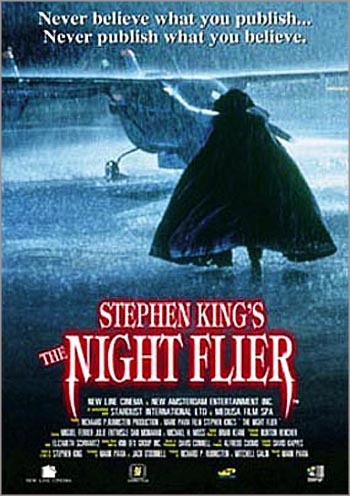
October 14, 2021
Hell is Overflowing
The plan is you drink a nice tall glass of shut the fuck up.
– CJ
Yesterday I was having a chat with a friend of mine, Rich (you should buy his book). Somehow or other we got on the subject of Zack Snyder and Rich reminded me of the existence of Snyder’s 2004 remake of Dawn of the Dead. Since I hadn’t seen it in some time, I decided to give it a re-watch for Day 14 of the Fright Festival.
Up front, I have to admit that I don’t enjoy this one as much as Romero’s original. I feel that the emphasis on action set-pieces comes at the cost of the characters, none of whom are particularly well developed, despite the best efforts of the cast. Everything in the film feels too crowded. One of the elements I enjoyed about the original was the silence and the emptiness that Romero evoked as his characters journey to the mall – it’s as if they’re the last living things in the world. Its something he uses to even greater effect in his follow-up, Day of the Dead, depicting a world turned into a tomb.
But in Snyder’s film, the world is anything but empty. In the background of every exterior shot, smoke boils towards the sky and gunfire crackles in the distance. Everywhere there is noise and motion, and the apocalypse is ongoing. Despite this, the film somehow lacks all sense of life – at times it feels like watching a cut scene from a video game. Characters quip rather than conversate and their decisions often seem to come out of left field, with little build-up. They are caricatures rather than flesh and blood, in service to a plot that alternates between meandering aimlessly and dashing forward.
Though it may sound as if I don’t care for the film, the truth is I don’t actively dislike it – instead, I am largely ambivalent. As a piece of media I find it so ephemeral, so lacking in substance, that I can watch it any number of times as I never retain anything about it. Its something to have on in the background while I’m doing something else.
There’s a sort of value in that, I suppose.

October 12, 2021
Last Resort Out Now
Josh’s newest novel, Last Resort, is out now from Aconyte Books! From the blurb:

Hordes of zombies threaten to wipe out all of mankind in this first action-horror novel set in the exciting (yet horrifying) world of the Zombicide games.
The zombie apocalypse has driven humanity up into the Adirondacks. Enter Westlake, a hardened career criminal on the path of “the Villa”, a legendary mafia hideout where he can escape the devastation.
When he’s ambushed by the undead, an old FBI “friend” and his squad of survivors rescue him… and then force him to reveal his secrets. The jokey myth of the Villa suddenly becomes salvation for the settlements scattered around Saranac Lake.
Reluctantly, Westlake is saddled with an oddball team to navigate minefields, trip wires, and flesh-eating zombies at every turn to find their safe haven. Shame there’s already someone living there…
Find out moreamazon usamazon ukSeptember 30, 2021
From the Dust to the Grave
The leaves are scraping the pavement and the night is turning cool. It’s time to return to that country composed in the main of cellars, sub-cellars, coal-bins, closets, attics, and pantries faced away from the sun, as Ray Bradbury described it. My favourite time of year, unsurprisingly. As I’ve said elsewhere, I’m an Autumn person at heart. I come from the dust, and to the grave I go.
As I mentioned last year, its an annual tradition of mine to celebrate the season by having a bit of a film festival. One horror film a day, every day for thirty-one days. Often its old favourites, but last year I decided to mix things up by including some films I’d never seen before, chosen at random, rather than watching them in some sort of prearranged order.
I’m planning to do that again this year, but I thought rather than simply noting what I’m watching on social media, I might do something a bit more involved – like, say, write a little about each film after I’ve watched it. One film and one post a day, for thirty-one days.
It’ll either be a lot of fun or a pain in the ass. Place your bets.
As always, the only exception to the impromptu order of things is my Halloween night viewing. I have a long standing tradition of watching Halloween (1978) and Abbot and Costello Meet Frankenstein (1948) on the thirty-first, which I’m probably not going to break anytime soon.
Anyway, tldr; thirty-one days of writing about monsters. Hope you enjoy it.
They sift the human storm for souls, eat flesh of reason, fill tombs with sinners. They frenzy forth….Such are the autumn people.
– Ray Bradbury, Something Wicked This Way Comes

September 29, 2021
Artisanal Story Crafting
First, a confession: I’ve never been very successful when it comes to subscriber-based self-publishing. I gave a Patreon a try for a time, but found it largely unsatisfying for a variety of reasons – fiddly software, low patron turnout, lack of focus. I jumped ship when Curious Fictions came along, but while the overall experience was better, I was still plagued by low subscription numbers and that nagging lack of focus. I could live with the former, but not the latter.
Curious Fictions went on hiatus a little while back, which meant I had a decision to make – go back to Patreon, or find a new outlet…Substack, say, or something similar. Only, none of those options were appealing, for various reasons. However, I still wanted to self-publish some short fiction. So, I decided to just buckle down and do it here.
On October 1st, a new Free Fiction page will appear on this site. On the first of every month, a new story will be posted to this page. These will mostly be reprints with the occasional new one to liven things up. Each story will be available for a month before being replaced by the next one.
Also, I figured it’d be appropriate to start it on October 1st because I’ve always liked giving away free Halloween stories and this year is no different. So, the first entry on the Free Fiction page will be “The Fear-Collector”, a new Royal Occultist story. Like my previous free Halloween stories, it’s based on a horror film – in this case, ‘The Tingler’.
Now, I’ll be the first to admit that this is a stopgap measure. I might well wind up going back to Patreon at some point in the future. But this lets me scratch the itch to put up free fiction, and you get something fun to read once a month.
Speaking of which, I’ve included a preview of “The Fear-Collector” below. Enjoy!
“Fear is the great leveller,” Chapin said, giving his brandy a swirl. He was a scalpel of a man, all sharp angles and edges. He took a sip, gave a sigh of pleasure and added, “Don’t you agree, Charles?”
“Never gave it much thought, Warren old thing.” Charles St. Cyprian replied, studying his own glass in the firelight. He was fairly certain Chapin had slipped something into it, though he wasn’t sure what that something was, just yet. Not poison – a sleeping draught, perhaps. And yet he didn’t feel tired. He considered asking his host about it, but decided against it for the moment.
“I’m surprised. I’d have thought you’d be more interested in the subject, given your time in the trenches.” Chapin took another sip of brandy. “Ypres, wasn’t it?”
“Among others.”
“I was at the Somme, myself. Refresh your drink?”
“No thank you.” St. Cyprian set his glass down. “You were talking about fear…?”
“The great leveller,” Chapin said.
“You mentioned that bit.”
“I thought it pithy enough to repeat.” Chapin’s lean face was positively skeletal in the firelight. He was a tall man, cadaverous but nonetheless aristocratic. In contrast to his host, St. Cyprian might’ve stepped from a Leyendecker canvas. They sat before the fireplace in Chapin’s study. Outside the room’s tall windows, London sank into the quiet of evening.
St. Cyprian wondered if he’d made a mistake, paying a call on Chapin. The man had to know that the police suspected him of the recent spate of killings in the East End – killings of a sufficiently curious nature so as to also attract the attentions of Charles St. Cyprian, His Majesty’s Royal Occultist. It was St. Cyprian’s duty, if not privilege, to investigate the unusual and outré in the name of His Majesty – and Chapin’s handiwork was certainly both. Half a dozen corpses scattered across the East End, found with grimaces of fear and backs flayed open to the bone. The question was – why?
As if reading his thoughts, Chapin smiled. “Are you certain I can’t get you something, Charles? You look somewhat peaked.”
“Fine and dandy,” St. Cyprian said. He felt somewhat drunk. Rather more than somewhat, in fact. Not a sleeping draught then. He blinked. The fire was looking at him. He shook his head, and the leering face vanished. “I say, did you see that?”
“Hallucinations are a common side-effect,” Chapin said, somewhat absently.
St. Cyprian glanced at the other man. “You did slip something in my drink, then.”
“It’s a chemical derivative of ergot,” Chapin said, his smile widening into a cruel rictus. “I developed it myself. It heightens the subject’s perceptions and loosens the tongue – I am curious to see what it does to a fellow such as yourself…”
TO BE CONTINUED IN “The Fear-Collector”…
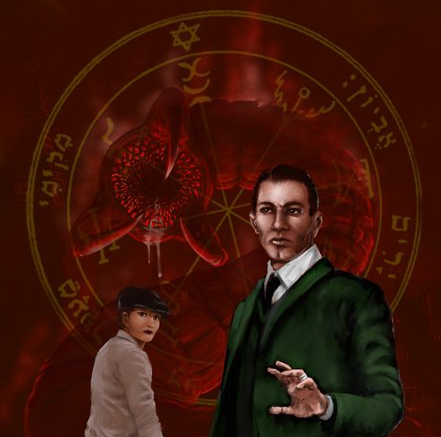
Deep School
The Devil has his places, and Jackapo County is one of them. Another bit of local color here, gussied up and tweaked for my own use. One of my cousins swore she’d seen this particular spot while out with friends, but I’m not sure whether I believe her. The craters are real as well – apparently South Carolina, well before it was South Carolina, got its share of meteors. Almost as if someone were trying to wipe it off the map before it had a chance to cause trouble.
The school sat back way deep in the woods. Some place where the only light that reached the school was moon-light. It was a tin-roofed building, black brick’d and red shuttered. It sat in the bottom of one of those tree-filled craters that pock-marked the county.
A man from the university had said them craters was ancient meteor strikes. That was why the plants grew so funny up amongst them. Fleshy plants that sweated unpleasant juices. The school nestled down among them plants like a toad.
It hadn’t been built, leastways not in living memory of any man or woman in the county. It had always been, though not always in the same place. No one rightly knew why folks thought it was a school, but everybody did, though few talked about it. The students, whoever they were, found it regardless.
No one knew who it was who used the school, only that it was used. At night, long past the sun, the school bell would ring…a deep, tolling sound that wasn’t really sound, but more an absence of it. A loud emptiness that shriveled the soul.
Folks who lived near would sometimes report that they’d seen goofer lights way back and deep as the students of the school followed a trail that only they could see to class.
Sometimes, in the night, there’d come a knock on the door of someone who lived too close to the school. A rattling, storming blow that shook the shack to its foundations. There’d be laughter, high and shrill, and goat-eyed shapes peeking in the windows.
In the morning, folks would usually find dead animals, butchered and half-eaten, on their roof-tops or laying in the road. Blood dripped from the upper branches of the trees and puddled in cold pools in the dirt where those fleshy plants sopped it up like gravy.
Most folks who lived near the school moved after a few years.
The school followed them.
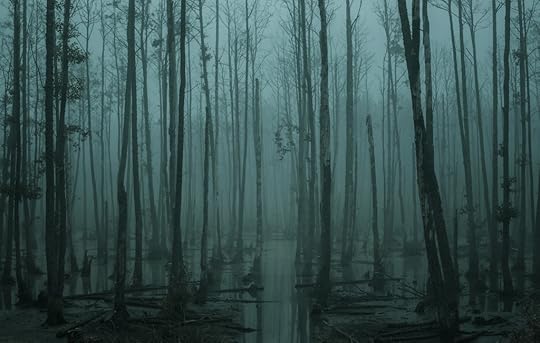
September 26, 2021
The Unnameables
Today’s look at the world of the Royal Occultist focuses on an old friend and staunch ally of Charles St. Cyprian, the ex-soldier and adventurer, Bobby Ogden, as well as his fellow ‘Unnameables’.
Sergeant Robert ‘Bobby’ Ogden, formerly of the 4th Battalion, Royal Fusiliers, currently of no fixed abode. Ogden and his squad were seconded to then-Royal Occultist Thomas Carnacki during the Great War, and served as bodyguards, escorts and general dogsbodies for both Carnacki and his apprentice, Charles St. Cyprian.
Nicknamed the ‘Unnameables’, Ogden and his men faced any number of unnatural opponents in the early years of the war, including a nest of vampires beneath St. Martin’s Church in Ypres and the abominable Hound of Mons.
While the unit did not escape front line duties entirely, they often found themselves fighting a different sort of war – one that left many of them dead, and the survivors with scars, both physical and otherwise. In Ogden’s case, he lost his arm at the Kemmelberg, during the Fourth Battle of Ypres in April 1918. It was during this same battle that Carnacki lost his life, and St. Cyprian was invalided out for the duration of the war. Despite all of the eldritch terrors they’d faced, it was bad luck and enemy artillery that spelled the end of the ‘Unnameables’.
After the war ended, Ogden attempted to forget the horrors he’d experienced, but found himself drawn into the Royal Occultist’s orbit more than once, often to his chagrin. Despite his missing limb, Ogden has lost little of his former vigour, and has proved an able ally, most notably during the sinister events surrounding Bethnal Green Military Hospital in November of 1919.
Ogden, like Philip Wendy-Smythe, was conceived as something of a sidekick for the Royal Occultist. I like peppering the stories with old acquaintances, in order to give the characters some degree of life outside the constraints of the plot. Too, Ogden serves as a connection to St. Cyprian’s time in the trenches. Unlike the bumbling Wendy-Smythe, he holds no illusions as to St. Cyprian’s somewhat haphazard methodology, and can act as foil for the purposes of humour.
I’m hoping to write more WWI-era Unnameables stories. While I won’t be spinning them off into their own thing, I do want to explore that period of the Royal Occultist’s adventures a bit more. I’d also like to do a few more Post-War Ogden appearances, perhaps dealing with the fall-out of some of he and St. Cyprian’s earlier adventures.
